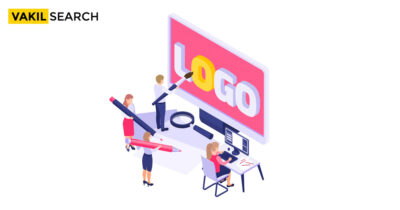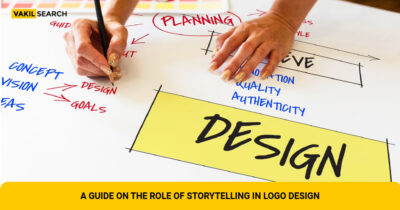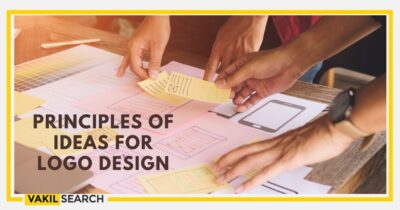A seven-step Logo Design Guide to teach you how to make a logo. Key factors to remember while making a logo. Know the significance of every step in this article.
A logo is a sign or emblem that is exclusive to a brand, an individual, a company, or a business. Logo Design Guide helps in discovery, research, brainstorming, designing, and some more important steps to follow. It can be simple or complex. It is the way in which your brand is distinguished from others.
These days, having a professionally created logo is essential for achieving success in the online world, and it should serve as the core of your digital marketing plan. There are many tutorials on Logo Design Guide online where small businesses can easily and effectively create successful logos.
Key Factor for Logo Design Guide
In this section, we have discussed the key factors that contribute to making up a good logo.
Relevant & Appropriate
- Your logo should be an accurate representation of your industry, as well as appropriate for the target audience
- Colour schemes that are bright and exciting may work well for a candy store logo but not for a funeral home
- A brilliant logo does not need to state what a firm does; your tagline and marketing materials do. A logo might be intellectual, abstract, unique, or artistic while yet conveying a message.
Describable & Legible
- Fonts that are very elaborate or ornamental and difficult to read should be avoided or used sparingly
- Gradients, shadows, and glow effects that are overused might be disturbing. When we develop your logo, we also supply a solid version of your Logo Design Guide that is free of any extraneous effects
- A superb logo has distinct lines that the spectator can recognise before becoming disinterested in complicated artwork. Aim for less text and white space.
Memorable & Timeless
- If your target market can’t recall your logo, it’s pointless. That is why a basic, unique design is the most successful
- You’re in business for the long haul, and longevity is essential for your brand’s identity. In certain sectors, “in one day/out the next” trends are excellent, but you’ll still stand out next year when others are out of date
- When your logo appears equally excellent on your website, letterhead, and billboard, you’ve got a winner.
Colour May be used effectively
- Many logos are in full colour, which is fantastic. In your final logo kit, Logo Dynamo offers a black and white version of your Logo Design Guide.
- This not only guarantees that your brand is readable and effective in black and white print advertisements, but it is also necessary for some promotional items where your logo can only be one colour.
Scalable/Versatile
- Logos should be straightforward and easy to replicate across a wide range of media and applications
- It will appear on everything from office stationery and business cards to promotional items such as pens, name tags, uniforms, customer giveaways, trade show materials, and so on
- Your logo should still be effective whether it is printed on a postage stamp (remember what we said about avoiding decorative fonts?) or on a billboard. You Should Know about Logo Design Online to Initiate the proper process.
7 Steps Logo Design Process
“The logo design process necessitates a combination of research, strategic thought, and creative quality.” — Alina Wheeler, Brand Identity Designer.
A step-by-step of Logo Design Guide is mentioned below:
- Discover – Learn about the client’s industry
- Research – Investigate the industry and its rivals
- Brainstorm – Generate ideas and settle on an art direction
- Sketch-Based on the approach, create logo concepts
- Design – Select the best logos and digitally implement them
- Present – Show logo designs to the customer and receive their approval
- Deliver – Create a style guide and export logo files.
Discover—Learn About the Client’s Industry
Every designer may take a somewhat different approach, but most would agree that executing a discovery phase and defining some form of brand strategy is a necessity.
Discovery entails learning about the client’s company, including its history, industry, rivals, and target audience. This is because logo design is not an art form, and we shouldn’t just start coming up with logo ideas out of thin air based only on our aesthetic sense. Know all the details with Logo Design Guide!
You know, a logo should fulfil a certain commercial aim. Thus you must remain objective throughout the process in order to create something acceptable.
Because a logo is the focal point of all brand communication—virtually it’s everywhere—it should be able to withstand the test of time.
Research – Investigate the Industry and Its Rivals
In the second stage, you take all of the material from the discovery phase and perform more research to get insights that will help you later in the ideation phase.
The goal of the research is to examine the industry in greater depth, do a visual study, and develop conclusions. Researching the industry allows you as a designer to acquire a sense of the context in which the logo will exist and Logo Design Guide.
Brainstorm—Generate Ideas and Settle on an Art Direction
Simply begin describing the method for creating logo concepts in the brainstorming process, depending on the discovery and research completed.
Brainstorming entails considering all conceivable design directions that might guide creativity in the proper path.
So this is where you hunt for a look or a style that can communicate your client’s brand character. Make Online Trademark Search with Simple Process to Follow from experts panel.
Sketch-Based on the Approach, Create Logo Concepts
The actual creativity comes into play while sketching logos, but because You’ve done your study, You will be able to assess the designs against well-defined criteria.
The purpose of sketching is to establish a link between a concept and the construction of a shape. Some designers use a sketchbook, while others begin on the computer right away, but most professional logo designers draw logos by hand, using pen on paper.
Design – Select the Best Logos and Digitally Implement it
So, after you have a large number of sketches, you can compare them to the plan and choose the most promising concepts to execute digitally.
The design phase now entails converting your designs into digital form and then assessing the practicality of each notion. So, instead of rushing to implement every single Logo Design Guide and idea you have, concentrate on designs that you believe will perform well for your customer.
Present – Show Logo Design Guide to the Customer and Receive their Approval
When you’re through developing your logo Graphic designs, you’ll only need to display them to your customer in the form of a presentation.
Display three of your most powerful brand identity concepts to the client on relevant applications.
Remember to only discuss with your customers options that will function well for them—don’t make the mistake of exhibiting something you’re not truly proud of.
Delivery – Export the Logo Files and Develop a Style Guide for Delivery
Once you’ve received your client’s approval, it’s time to provide the brand identity package, which includes logo artwork and a style guide.
The distribution package should include logo source files as well as a style guide outlining how to utilise the logo. Again, depending on the applications stated in the strategy section, you will know what sort of data you should give.
Read more:-









